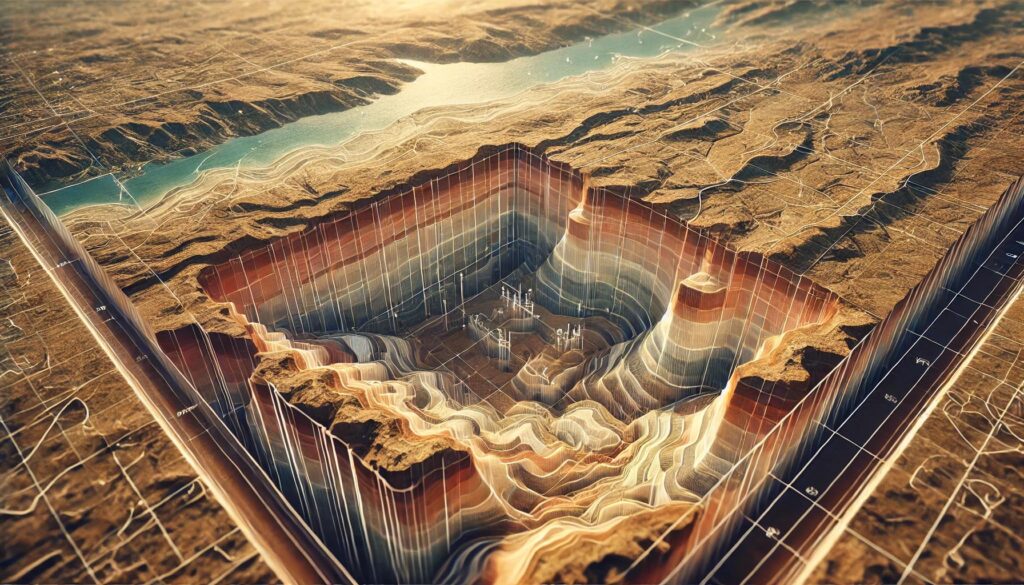Exclusive: CMG collaboration with NVIDIA seeks to accelerate reservoir modelling for energy transition

Image generated by DALL-E with input from OpenAI’s ChatGPT
“The world has not seen something like this technology before,” says John Mortimer, Chief Technology Officer of Computer Modelling Group (CMG), describing a new collaboration that pairs CMG’s reservoir simulation expertise with NVIDIA’s cutting-edge Grace Hopper Superchip technology.
In an exclusive interview and preview, Digital Journal has learned details of the companies’ work together that Mortimer says will elevate simulation speeds to levels unheard of in the energy sector, reshaping the very standards of reservoir modelling.
“What we’re going to see from a CMG GPU-based simulator is a step change in speed,” Mortimer says. “It will be significantly faster.”
At the core of this development is the integration of CMG’s advanced simulation tools with NVIDIA’s powerful hardware and high-performance computing software, positioning CMG to offer energy companies a unique advantage in rapidly increasing time-to-decision.
The companies’ collaboration is allowing CMG to offer energy companies a distinctive advantage in an industry where simulation is critical for both production and transition.
A timely solution to industry challenges
Energy companies today face complex challenges: optimizing resource extraction, handling massive datasets, and navigating the pressures of an energy transition (to name a few).
One critical technology that is used in all these processes is simulation.
In both oil and gas exploration and energy transition modelling, simulation acts as a tool for “seeing” beneath the surface, where direct observation is impossible. Like working blindfolded, reservoir engineers rely on simulations to predict underground structures, helping them make informed decisions on resource extraction, or CO2 storage, for example.
Simulation is a must-have in the energy space, but it requires massive computational power to process complex mathematical models and vast amounts of subsurface data, often involving millions of simultaneous calculations.
Many simulators have traditionally used CPUs (Central Processing Units) that function as the “brain” of a computer. They are capable of limited parallel processing but are often optimized for executing tasks in sequence. Simulation benefits from massive parallel computing in order to execute millions of calculations simultaneously.
That’s where NVIDIA’s GPUs, or Graphics Processing Units, make a difference.
Originally built for rendering graphics in video games, NVIDIA software engineers enabled GPUs to benefit from acceleration software for reservoir simulation – allowing GPUs to handle a substantially higher number of parallel tasks at once, making them ideal for the intense number-crunching required in energy modelling.
The NVIDIA Grace Hopper Superchip goes a step further by tightly integrating both CPU and GPU capabilities into one powerful unit, which can share data quickly without traditional bottlenecks.
What does that mean for simulation?
Imagine there’s a narrow bridge between the world of physics and the world of computation, where information must pass back and forth like a single person crossing at a time. This setup limits processing power, regardless of the capabilities on either side.
“What Grace Hopper does is it turns that bridge into a super highway that allows 100 people to go over it at once,” Mortimer says.
This architecture opens up memory access so that any computation can pull data quickly, removing previous bottlenecks. And Mortimer says CMG’s setup includes custom-tailored code to utilize the hardware capabilities to their fullest potential. That was all possible because of collaboration between the two companies.

Breaking ground with real-world and AI-enhanced simulation models
While other energy software companies are working with NVIDIA to accelerate subsurface imaging and generative AI for energy production, CMG and NVIDIA’s collaboration distinguishes itself by focusing on pushing the boundaries of reservoir simulation with Grace Hopper.
In addition to leveraging AI, CMG is focused on redefining simulation speeds and accuracy through an unprecedented level of hardware-software integration.
The CMG-NVIDIA collaboration represents a shift for CMG from a traditionally internal development approach to an ecosystem model.
By working with NVIDIA, CMG has gained access to the world’s foremost experts in parallel computing and GPU optimization, something Mortimer says has been a game changer.
Using a blend of real and synthetic data, the enhanced simulation capabilities will give operators multiple perspectives on reservoir characteristics, enabling them to evaluate different scenarios more efficiently.
It’s not just about making simulations faster but making the entire technology more accessible, says Nefeli Moridis, NVIDIA’s Developer Relations Manager for subsurface applications.
“If we can accelerate it, more and more people can begin leveraging it, and I think that’s key for technology adoption within the industry,” Moridis says.
The speed advantages are obvious benefits, but reducing complexity also makes it easier for newer engineers or those without a simulation background to leverage the full potential of these tools.
Moridis explained that NVIDIA collaborates with partners such as CMG by embedding NVIDIA’s software development kits (SDKs) directly within CMG’s simulators, which are “optimized to be super performant on the GPU.”
She also emphasized that NVIDIA is working with CMG to identify which parts of their simulator could best benefit from GPU acceleration to ensure optimal performance.

Speeding up the energy transition
In a world moving towards energy sustainability, this collaboration also supports CO2 storage and carbon capture initiatives.
NVIDIA’s Grace Hopper Superchip operates at four times the power efficiency of traditional CPUs, minimizing energy consumption in data centres while handling extensive high-performance computing simulation workloads.
This energy-efficient, high-speed processing capability could play a key role in carbon capture simulations, making it more feasible to model long-term storage scenarios with less environmental impact.
“If it took you a month to run your simulation on a CPU cluster, and now it takes hours, there’s a significant power saving,” says Moridis. “Also, CMG is leveraging the Grace Hopper Superchip technology that has four times less power requirements.”
These advancements mean more than just operational gains—they represent a shift toward energy solutions that prioritize both sustainability and performance.
“For us, this isn’t just a performance upgrade — it’s a new way of thinking about sustainable energy solutions,” says Mortimer. “By speeding up our CO2 modelling, we’re cutting down on the energy required to run these simulations, which aligns with the very transition we’re modelling.”
A game-changer for energy and beyond
For the broader tech world, this partnership underscores the potential of high-performance simulation in applications beyond oil and gas, impacting areas like subsurface CO2 and hydrogen storage, renewable resource management, and even global climate initiatives.
As Mortimer explains, the collaboration with NVIDIA allows CMG to “embed in our code-explicit assumptions” that optimize for hardware like Grace Hopper, something CMG couldn’t have achieved alone.
“We’ve been given access to NVIDIA’s world of experts, people who are rewriting the future of parallel computing,” says Mortimer. “For us, it’s not about incremental improvements—it’s about a fundamental shift in what’s possible with simulation. We’re rethinking all of the assumptions about how we’ve built our core simulation technology.”
Set to launch early next year, CMG’s upcoming product positions the company to offer more advanced solutions for both traditional reservoir simulation and sustainable energy transition applications.
For companies navigating the transition to more sustainable energy practices, this means faster, deeper insights and a quicker path from model to decision.

This article was created with the assistance of AI. Learn more about our AI ethics policy here.
Exclusive: CMG collaboration with NVIDIA seeks to accelerate reservoir modelling for energy transition
#Exclusive #CMG #collaboration #NVIDIA #seeks #accelerate #reservoir #modelling #energy #transition





